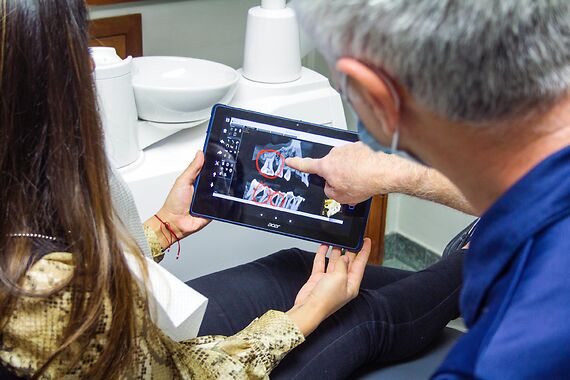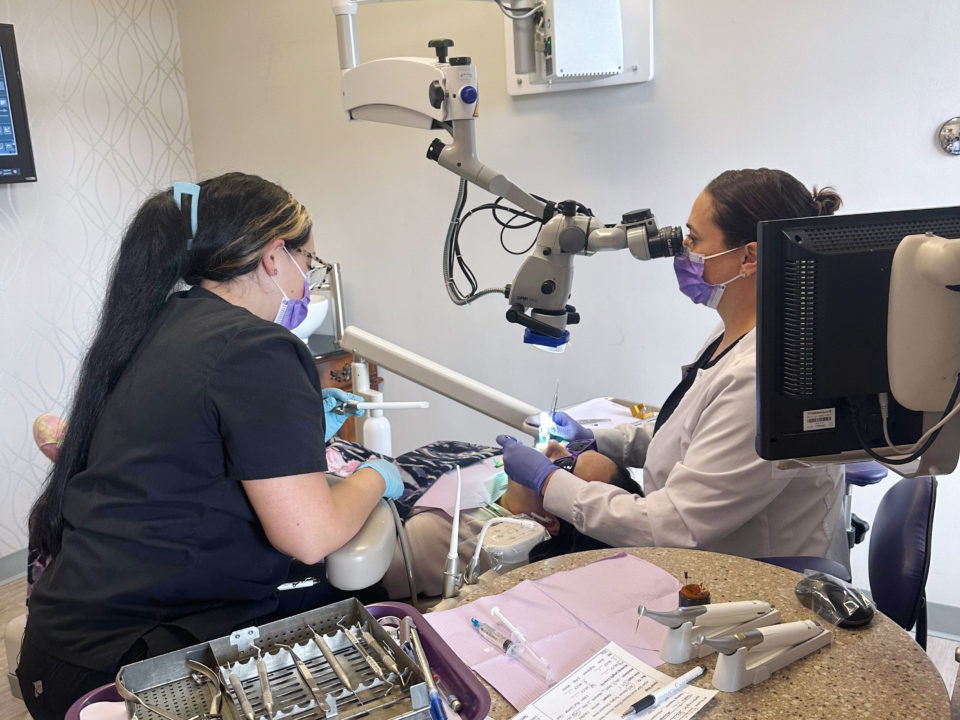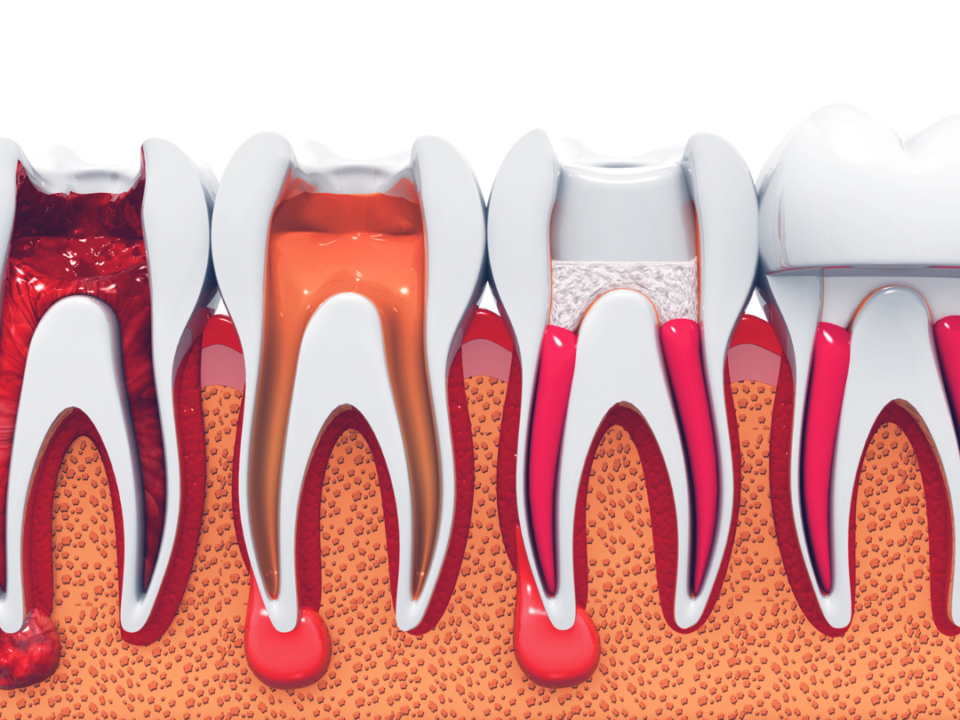
Reinfected Root Canal: Why It Happened and What To Do
June 22, 2022
What Can I Eat After a Root Canal?
July 11, 2022
Reinfected Root Canal: Why It Happened and What To Do
June 22, 2022
What Can I Eat After a Root Canal?
July 11, 2022If you have a painful tooth, you go to the dentist and they will take an x-ray. The dentist tells you that the decay is so deep that you have the option of a root canal or an extraction. Which do you choose? Learning how to compare a root canal vs. extraction is the first step in deciding. Learn more about the differences between these with this guide from Innovative Endodontics.
Root Canal vs. Extraction – Reasons You Might Need the Procedure
When bacteria get deep into a tooth, there are typically two options to address the problem, either a root canal or an extraction. In many cases, the difference in whether an endodontist recommends one or the other is the degree of damage done to the tooth. There are instances when damage or decay is too severe for even the most skilled endodontists to save the natural tooth.
Dental decay, or a cavity, is the most common reason for needing either procedure. Decay occurs when the bacteria in your mouth feed on sugars from your diet. This produces acid which eats away at the enamel and dentin of the tooth. If small, a dentist can quickly clean out the decay and place a filling to stop the process.
However, without this treatment, the decay will extend deeper into the tooth. Once bacteria get inside the tooth, they continue to spread, causing inflammation and discomfort. Symptoms can vary from a dull ache to discomfort when biting or sensitivity to temperature. Never ignore dental discomfort because it indicates that you need a dental evaluation.
Another cause for needing an extraction or root canal is a broken or cracked tooth. An endodontist will examine the damage with advanced imaging technology to decide if they can save the tooth through root canal therapy or endodontic surgery. Vertical fractures that go below the gum line may require extraction. Consulting with an endodontist will enable you to know your options.
Process of Root Canal vs. Extraction
Getting a dental extraction may be a simple, non-surgical procedure in which the dentist pulls the tooth from the mouth with a local numbing agent in your gums. However, some cases may require surgical extraction. In these instances, an oral surgeon will remove the tooth, possibly necessitating IV sedation.
If you elect to have a dental implant to replace the missing tooth, additional surgical intervention will be required. Often, the first surgery cannot be performed for a few months after the extraction in order for the bone to heal. The dentist will surgically place a titanium screw, or implant, into the jaw bone. Following this surgery, you will need to allow your bone to heal around the implant to secure it.
The next surgery is to “uncover” the implant which is beneath the gums. Once that is healed, a crown will be placed into the implant. Once finished, you will have an artificial replacement for your extracted tooth that feels and functions like a tooth. However, the process can take multiple months to complete.
Alternatively, root canal therapy is not a surgical procedure and is a far less invasive treatment which also enables you to save your natural tooth. A root canal involves cleaning out the inside of the tooth and getting you out of pain. The whole procedure typically takes about one hour and feels like getting a filling. There is no bleeding involved as everything is done within the inside of the tooth. You will only need to get numb like you do for a filling and no IV sedation is necessary. You will be able to drive yourself home and even go back to work the same day.
Recovery Time for Root Canal vs. Extraction
A major difference in comparing root canal treatment and extraction is the recovery time. For extractions, you could feel discomfort at the site for weeks. If you also choose to get an implant, you will have additional weeks of healing following each surgery.
Root canal treatment may have some minor soreness for a few days, but most patients say it is painless and similar to getting a cavity filled. Ibuprofen and Tylenol are all that is needed to manage the soreness after treatment.
Cost for Root Canal vs. Extraction with a Dental Implant
Overall, the cost of a root canal is cheaper. The fee for a root canal is often covered by insurance and is much less than the price for extraction with a dental implant. Many insurance companies won’t pay for implants because they consider them cosmetic.
Long-Term Results of Root Canal vs. Extraction
Root canal therapy can help preserve a tooth. In choosing this option, you may avoid the need for dentures or dental bridges in your later years. Keeping more of your natural teeth is the best option for the health of your jaw and your appearance.
Extractions can come with potential complications, especially if you choose not to get an implant. Without a tooth replacement, teeth can shift in your mouth and alter your bite. Additionally, when a tooth is removed, the jawbone surrounding where the tooth was diminishes and does not grow back. When the jaw does not have a tooth to support it, the bone will begin to thin and wear away. People who wear dentures report that they need refitting or find their face changes shape as their jawbone thins over time. If you choose to get an implant years later, you may need extra surgery to graft bone to the site to be able to hold the implant.
Contact Us at Innovative Endodontics for Root Canal Treatment That Can Help You Avoid Extraction
It is our opinion at Innovative Endodontics that there is nothing as good as your natural tooth! If you need root canal treatment, contact us at Innovative Endodontics. The extra education that our Dr. Estes has as a board-certified endodontist allows you to have a relaxing procedure. Contact us today if you think you need root canal therapy. You can recover from your tooth discomfort quickly and get on with your life while keeping your tooth and saving your wallet!




